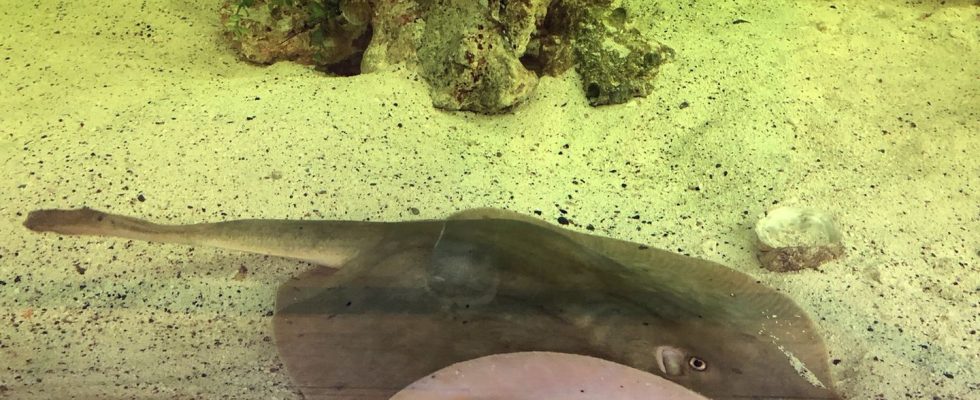Bizarre reproduction
“We thought she had cancer”: The only stingray in an aquarium is pregnant – probably by a shark
Stingray Charlotte is pregnant
© Aquarium & Shark Lab by Team ECCO
It often happens that animals in captivity fertilize themselves. But researchers now have completely different suspicions about a stingray in a laboratory in North Carolina.
It was an unexpected discovery. “We started taking ultrasound scans of our ray, Charlotte, because she suddenly started to swell,” recalls Brenda Ramer of Team ECCO’s Aquarium and Shark Lab in Hendersonville. North Carolina in an interview with the local station “Channel 3”. “We had noticed several internal swellings and initially suspected she had cancer.” But instead the news was as beautiful as it was surprising: Stingray Lady Charlotte is pregnant.
“I brought in aquarium veterinarian Dr. Rob and he identified the growths as eggs,” Ramer explains. The aquarium employees were surprised. Because: “We don’t have a male ray.” They initially assumed an explanation that may sound even more fantastic to laypeople: self-fertilization. In what is known as parthenogenesis, females of some animal species can reproduce without a partner if they cannot find a partner in extreme situations – for example because they are isolated. “We have had a few cases of parthenogenesis in rays,” says Ramen. Charlotte would not be the first female ray to become pregnant without male support. But then another possibility was discovered in Hendersonville.
Stingray Pregnancy: Unexpected Explanation
Shortly before the pregnancy, the staff had moved two white-spotted bamboo sharks into Charlotte’s tank. Both young males. “We didn’t see a problem with it,” says Ramen. When they discovered bite marks on the ray’s fins one day, they initially suspected other fish in the tank were the cause. But after they were removed, new bites appeared. When the female ray became pregnant, the scientists were amazed: the marks corresponded to the bites with which sharks cling to females during the mating ritual. “A light bulb dawned on us,” says employee April Smith in the team’s blog. “Did one of our sharks breed with her?”
It’s not as absurd as it may sound. Despite their visual differences, sharks and rays are related to each other and are both bony fish. The mating behavior is also similar. According to the scientists, it is entirely conceivable that mating occurred.
Waiting for the birth
Now the whole team is waiting anxiously to see which of the two explanations is actually correct. “We will carry out a DNA test on the young after birth – if there is no visual evidence of a mixed species,” the team explains on its website. It shouldn’t be too long until the birth. The species to which Charlotte belongs usually gestates for three to four months. “It could happen any day,” says Team Ecco.
Anyone who would like to follow the pregnancy and birth can do so on the research institution’s Facebook page. There is also a video in which the scientists documented the ultrasound of the expectant ray mother.


